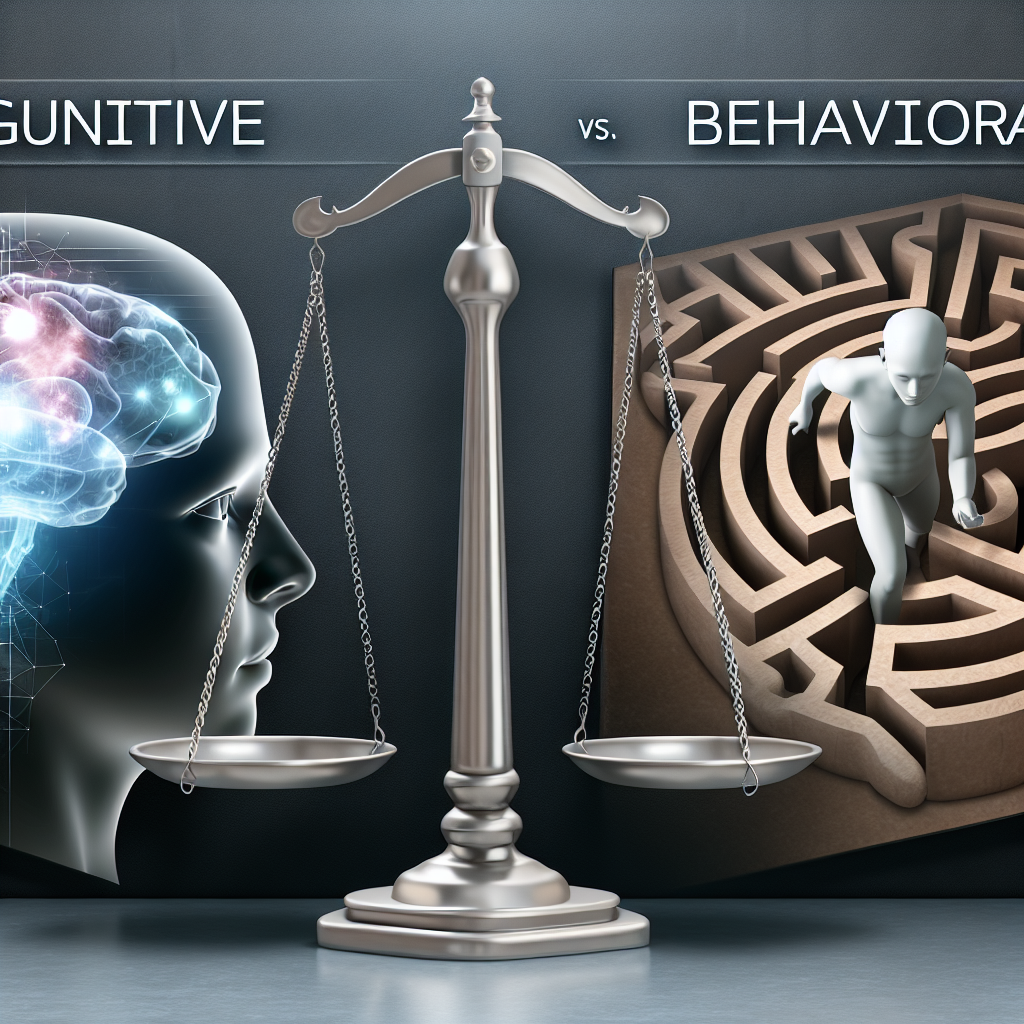
Cognitive vs. Behavioral: Which Learning Theory Reigns Supreme? The Ultimate Guide to Understanding Learning Theories
Introduction: The Quest for the Ultimate Learning Theory
In the ever-evolving landscape of educational psychology, the debate surrounding cognitive and behavioral learning theories remains as vibrant as ever. Are we merely creatures of habit shaped by our environment, or do our thoughts and understanding hold the key to learning? This riveting question, encapsulated in the phrase Cognitive vs. Behavioral: Which Learning Theory Reigns Supreme?, not only ignites intellectual curiosity but also influences teaching methodologies, learning styles, and even educational policies worldwide.
In today’s fast-paced world, where lifelong learning is essential, understanding these two fundamental approaches is more critical than ever. This article will delve into the intricacies of cognitive and behavioral theories, comparing their applications through engaging case studies, valuable insights, and actionable takeaways. By the end, you will be equipped to make informed decisions that could transform your learning or teaching journey.
Understanding Cognitive Learning Theory
Defining Cognitive Learning Theory
Cognitive learning theory emerged as a powerful alternative to behaviorism, emphasizing the importance of mental processes in learning. Key thinkers like Jean Piaget and Jerome Bruner championed this theory, arguing that learning involves understanding and the organization of information rather than mere memorization or conditioning.
The Core Principles of Cognitive Learning
Active Engagement: Cognitive learning requires active participation in the learning process. Students must engage with the material, asking questions and making connections.
Schema Development: New information is integrated into existing mental frameworks known as schemas. This allows learners to relate new knowledge to prior experiences.
- Problem-Solving: This theory emphasizes critical thinking and problem-solving, positioning learners as active participants who construct knowledge.
Case Study: The Flipped Classroom
Overview: In a flipped classroom model, students learn new content at home through videos or readings and engage in collaborative exercises during class time.
Analysis: By fostering active engagement and allowing for face-to-face interaction, this model exemplifies cognitive principles. A study conducted by the University of Texas at Austin found that students in a flipped classroom scored significantly higher on assessments compared to those in traditional settings. This success underscores the relevance of cognitive learning strategies in optimizing educational outcomes.
Understanding Behavioral Learning Theory
Defining Behavioral Learning Theory
Behavioral learning theory, rooted in the works of B.F. Skinner and Ivan Pavlov, posits that all behaviors are learned through interaction with the environment. This theory focuses on observable behaviors, advocating that learning is a direct result of reinforcement and punishment.
Core Principles of Behavioral Learning
Conditioning: Learning occurs through conditioning—classical (Pavlov) and operant (Skinner) conditioning—where behaviors are reinforced or punished.
Reinforcement and Punishment: Positive reinforcement strengthens desired behaviors, while negative reinforcement reduces unwanted actions, creating a structured learning environment.
- Observable Outcomes: Behavioral learning emphasizes measurable changes in behavior as outcomes of the learning process.
Case Study: Classroom Management Strategies
Overview: A school implemented a behavior modification program based on positive reinforcement to improve student behavior.
Analysis: By rewarding good behavior with tokens that could be exchanged for privileges, the school reported a 40% decrease in classroom disruptions. This case exemplifies the effectiveness of behavioral principles in fostering desirable actions and enhancing learning environments.
Cognitive vs. Behavioral: A Comparative Analysis
Key Differences
| Aspect | Cognitive Learning | Behavioral Learning |
|---|---|---|
| Focus | Internal mental processes | Observable behaviors |
| Learning Process | Information processing and understanding | Conditioning through reinforcement |
| Role of Learner | Active participant | Passive recipient (originally) |
| Assessment Methods | Focus on understanding and application | Focus on measurable behavioral change |
Which Theory is More Effective?
So, Cognitive vs. Behavioral: Which Learning Theory Reigns Supreme? The answer is complex and often context-dependent. Cognitive learning may shine in environments that prioritize critical thinking, creativity, and deep understanding. In contrast, behavioral approaches can be effective for skill acquisition and establishing routines.
Let’s examine the strengths and challenges associated with both theories.
Strengths of Cognitive Learning
- Holistic Understanding: Cognitive learning emphasizes understanding and elaboration rather than rote memorization.
- Facilitates Critical Thinking: Encourages learners to analyze and synthesize information.
- Adaptable: Can be tailored to various learning styles, making it applicable across diverse educational contexts.
Weaknesses of Cognitive Learning
- Abstract Concepts: It may be challenging for some learners to engage with abstract concepts without foundational knowledge.
- Time-Consuming: This approach can require more time for exploration and understanding, potentially prolonging the learning process.
Strengths of Behavioral Learning
- Immediate Feedback: The reinforcement mechanism provides immediate feedback, which can enhance motivation and improve retention.
- Structure: Creates a clear structure, helping learners understand expectations.
Weaknesses of Behavioral Learning
- Limited Scope: May overlook the importance of cognitive processes and emotional aspects of learning.
- Dependence on External Factors: Learners might become reliant on external reinforcement, which could hinder intrinsic motivation.
Real-World Applications of Cognitive and Behavioral Learning
Education
In educational systems, both theories coexist, often complementing each other. While behaviorism can establish classroom rules through reinforcement, cognitive strategies might be employed to develop critical thinking.
Corporate Training
Organizations often use cognitive theories to develop leadership programs that emphasize decision-making. Conversely, behaviorist principles might be applied in sales training, where immediate rewards and role-play scenarios reinforce desired behaviors.
Therapy and Personal Development
In therapeutic settings, cognitive-behavioral therapy (CBT) synthesizes elements from both approaches to address mental health issues effectively. It recognizes the interplay between thoughts and behaviors, assisting individuals in implementing transformative strategies for self-improvement.
Conclusion: Embracing a Dual Perspective
In the age of information, the debate surrounding Cognitive vs. Behavioral: Which Learning Theory Reigns Supreme? stands as a testament to the complexities of human learning. While it is challenging to declare a clear victor, the strength of both cognitive and behavioral theories lies in their complementary nature.
Educators, trainers, and individuals should embrace a blended approach, harnessing the power of cognitive engagement with the structured reinforcement of behaviorism. Whether you’re a student seeking effective learning strategies or an educator aiming to enhance your teaching methods, recognizing the diversified applications of these theories can propel you toward success.
FAQs
1. What is the main difference between cognitive and behavioral learning theories?
Cognitive learning focuses on internal mental processes, while behavioral learning emphasizes observable behaviors shaped by the environment.
2. How can educators apply cognitive learning theories in the classroom?
Educators can implement group discussions, problem-solving tasks, and project-based learning initiatives to foster cognitive engagement.
3. Are behavioral techniques effective in all learning environments?
While behavioral techniques can be very effective, they may not account for individual cognitive differences and intrinsic motivation, making them less suitable for some contexts.
4. How does cognitive-behavioral therapy incorporate these theories?
Cognitive-behavioral therapy synthesizes cognitive and behavioral principles, helping individuals change dysfunctional thoughts and behaviors for improved mental health.
5. Can these theories be used together in a learning environment?
Absolutely! A blended approach that combines cognitive and behavioral strategies can create a more comprehensive framework for effective teaching and learning.
This comprehensive exploration of Cognitive vs. Behavioral: Which Learning Theory Reigns Supreme? not only highlights the nuances of each theory but also integrates insightful case studies and actionable strategies to make effective use of both approaches. The world of learning is multifaceted; embracing this complexity can lead to transformative educational experiences.
















